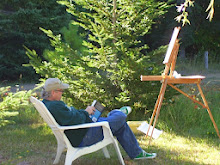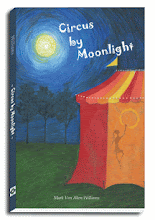I have to wear two hats.
With the Prophet, I get to explore the use of language. I purposely wrote in a style that would let me explore the inner word-nerd in me--
David Alfaro Siqueiros: Journal
They say that, typically, people who are easily angered come from families that are splintered, turbulent, and not particularly skilled at emotional communication. I would say that the impetus for my mordancy came from the Marist fathers. Like so many other Marxist and atheists in Mexico, I had an early Catholic education. Like the fathers, I believe that when I am morally right, any blocking or changing of my obligations is viewed as an unbearable indignity, which should not have to be suffered.
I do not look to God for salvation, but to Cuauhtémoc, the last Aztec king. He symbolizes the glory of Mexico and all things noble and good. In contrast, Cortés symbolizes black-hearted evil and the epitome of Western imperialist domination.
Creativity, which has been a deliberate part of my spiritual search, may be expressed not only in aesthetics but in creative action; in a way that rallies people to confront social injustice. My soul is passionately committed to creating a better world.
Just as in the world, not all factors in a work of art are equivalent. Structure, composition, and arrangement result from the subordination of certain integrants to others. It creates a flow, and the illusion of movement that is beyond the limits of psychological time. Through this flow, the artist creates a correlation between the construction and the subordination. Art represents the interaction of this struggle: the unfolding of the temporal, pure motion. Without this enslavement, or the calculated distortion of antecedents, there can be no art.
Art itself is a cognitive function that does not need emotive involvement. Emotion was not made to facilitate art, but art was made to facilitate the expression of it: the undercurrents of arousal and fury.
In the Hillbilly Vampire Chronicles, the tables are turned and I have free reign to use dialogue to define the characters--
The renovation kept Amos busy for a time, while Esther continued to smoke her meth. Pacing the length of the trailer, she would peek out through the sheets they had hung as curtains. Certain that the midget clowns were peering at her from the woods, the paranoia inundated her.
She grabbed the .22 automatic and unloaded a clip at the perceived lurking shadows. Amos hearing the burst came running out of the bedroom and relieved her of the weapon.
“Jesus Christ, you’re going to kill one of those kids.”
“It’s the midgets. Don’t you see them in that tree line? There planning to invade the trailer, I tell you.’
“Midgets? Are you crazy? Oh man, are you ever fucked up,” Amos said.
“Quiet! They can read our thoughts,” she said while picking at her skin.
She took another swig from the ever-present can of Mountain Dew she used to allay a perpetual case of dry-mouth.
The hillbilly father came banging on the door.
“Oh shit, it’s them,” she screamed. “Give me that gun back.”
“Just a second,” Amos called out.
He answered the door and had to deal with the irate neighbor. He explained that it was an accident and settled the situation by offering the gun to him to borrow for some hunting.
“We need to talk, Esther.”
“Sure but they can hear us. We need to find a safe place. Come with me. Now get down here and stick your head in the oven. We can talk in here.”
“I ain’t sticking my head in no oven.”
As Shakespeare said, “Now, by two-headed Janus. Nature hath framed strange fellows in her time.”
With me, it’s inside my noggin.







No comments:
Post a Comment